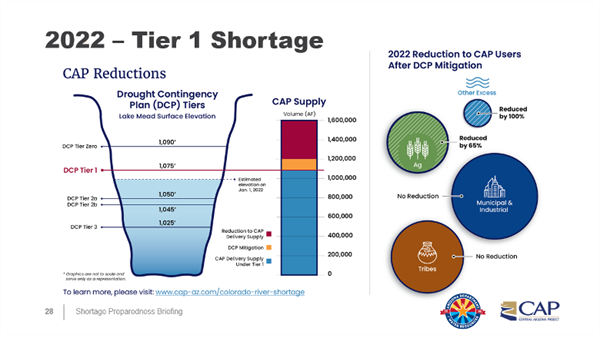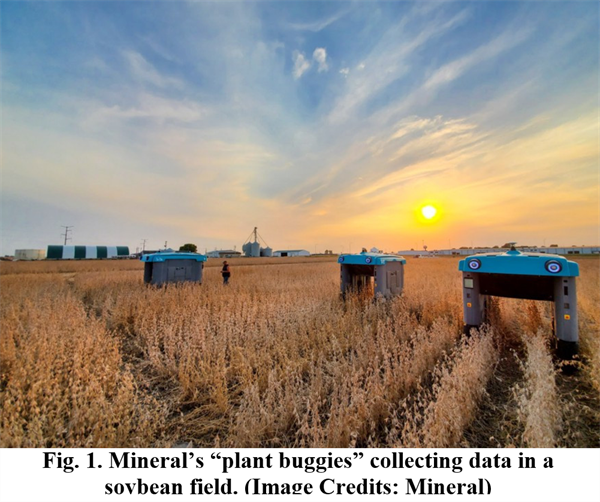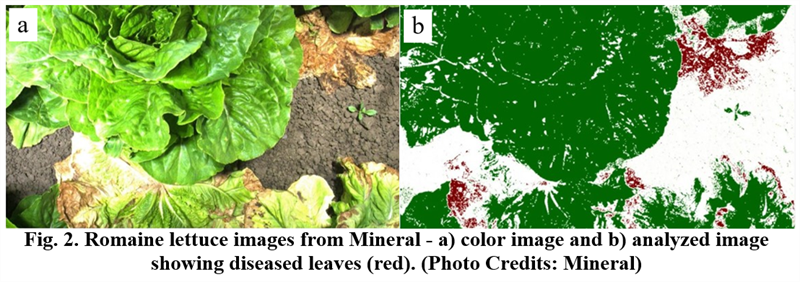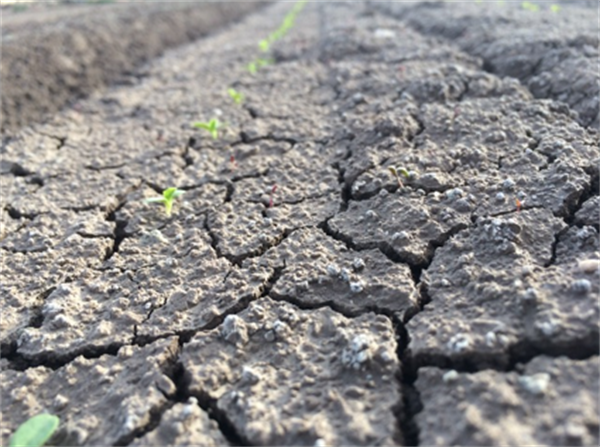
For those of us living in the desert, particularly working in agriculture, we commonly use rather affectionate terms to describe water. Water is often referred to as the “life blood” of the desert and we know that “water is life” and it is the most critical limiting factor in any desert crop production system. It is important for everyone in Arizona agriculture to be aware of our water supplies and the prospects for the future.
As the population has grown in the desert Southwest, the demands on our water resources have increased substantially. This has been exacerbated by two decades of drought and increasing average temperatures. As a result, Arizona water supplies have become increasingly critical in terms of both short and long-term capacities.
Continual reviews are being conducted by the Arizona Department of Water Resources (ADWR) and the Central Arizona Project (CAP) and other Arizona agriculture groups regarding Arizona water supplies, specifically from the Colorado River, which supports, at least in part, more than 80% of the Arizona population. The system-wide effort to stabilize the Lake Mead water supply with the 2019 Drought Contingency Plan (DCP) seems to be working as intended to help forestall drops in the reservoir’s levels. However, it does not remove all risk of continually lowering water supplies in Lake Mead.
The DCP for the lower basin of the Colorado River, below Lake Powell, is a set of shortage-sharing agreements among the Lower Basin States of Arizona, California, and Nevada. The DCP augments the 2007 shortage-sharing agreements put in place by the states who are dependent on the Colorado River.
On 16 August 2021, the Bureau of Reclamation declared that Lake Mead will be in a Tier One shortage level beginning 2022. The elevation of the lake is and will continue to be below 1,075 feet above sea level. As a result, Arizona will now be subject to significant cuts in water deliveries from the Colorado River based on Tier 1 reductions in water allocations, that are part of the DCP, and this will go into effect in January 2022 (Figure 1). This will result in Arizona reducing Colorado River water use by 512,000 acre-feet (AF), or 18% of Arizona’s total allocation of 2.8 AF. Tier 1 reductions primarily impact the CAP water allocations, which will be reduced by 30%. Under Tier 1 reductions, agricultural CAP water allocations will be reduced by 65%, primarily affecting Pinal County agriculture. Statewide municipal & industrial and tribal allocations will not be reduced under Tier 1 guidelines. Yuma area water allocations will not be reduced under Tier 1.
We continue to monitor Lake Mead conditions and if lake levels drop to 1,050 and 1,045 ft., we will enter Tier 2 (a and b, respectively) conditions which will increase total reductions of Colorado River water to Arizona to 590,000 and then 640,000 AF, or 21 and then approximately 23% of Arizona’s total allocation. The ADWR provides a good source of information and the prospects on these changing conditions.
Good management and stewardship of our water resources in the field is always important and we are particularly alert to that now.
For additional information please refer to the ADWR, CAP, BOR, and the University of Arizona Water Resource Research Center websites:
https://new.azwater.gov/
https://www.ibwc.gov/Files/CF_CR_LBDCP_073019.pdf
https://library.cap-az.com/documents/departments/planning/colorado-river-programs/CAP-FactSheet-DCP.pdf
https://www.cap-az.com/
https://wrrc.arizona.edu/

Figure 1. Colorado River water reductions in 2022 for CAP users after DCP
mitigation. Reference: Arizona Department of Water Resources (ADWR) and the
Central Arizona Project (CAP).
I hope you are frolicking in the fields of wildflowers picking the prettiest bugs.
I was scheduled to interview for plant pathologist position at Yuma on October 18, 2019. Few weeks before that date, I emailed Dr. Palumbo asking about the agriculture system in Yuma and what will be expected of me. He sent me every information that one can think of, which at the time I thought oh how nice!
When I started the position here and saw how much he does and how much busy he stays, I was eternally grateful of the time he took to provide me all the information, especially to someone he did not know at all.
Fast forward to first month at my job someone told me that the community wants me to be the Palumbo of Plant Pathology and I remember thinking what a big thing to ask..
He was my next-door mentor, and I would stop by with questions all the time especially after passing of my predecessor Dr. Matheron. Dr. Palumbo was always there to answer any question, gave me that little boost I needed, a little courage to write that email I needed to write, a rigid answer to stand my ground if needed. And not to mention the plant diagnosis. When the submitted samples did not look like a pathogen, taking samples to his office where he would look for insects with his little handheld lenses was one of my favorite times.
I also got to work with him in couple of projects, and he would tell me “call me John”. Uhh no, that was never going to happen.. until my last interaction with him, I would fluster when I talked to him, I would get nervous to have one of my idols listening to ME? Most times, I would forget what I was going to ask but at the same time be incredibly flabbergasted by the fact that I get to work next to this legend of a man, and get his opinions about pest management. Though I really did not like giving talks after him, as honestly, I would have nothing to offer after he has talked. Every time he waved at me in a meeting, I would blush and keep smiling for minutes, and I always knew I will forever be a fangirl..
Until we meet again.
Two years ago, Alphabet’s (Google) X-Labs initiated one of their infamous and far reaching “moonshot” projects focused on growing food sustainably on global scale. As you might expect, the project has been, and is kept pretty secret, but the company recently unveiled some details about the project through a company blog article (Grant, 2020) and their newly established website (https://x.company/projects/mineral/). The project is called “Mineral” and according to project lead Elliot Grant, the team has been working “alongside experts in the field – literally and figuratively…developing and testing a range of software and hardware prototypes based on breakthroughs in artificial intelligence, simulation, sensors, robotics and more”.
One of the tools the team has developed is a self-propelled “plant buggy” equipped with multiple cameras, sensors, GPS and other electronic equipment (Fig. 1). According to Mineral’s website, “Over the past few years, the plant buggy has trundled through strawberry fields in California and soybean fields in Illinois, gathering high quality images of each plant and counting and classifying every berry and every bean. To date, the team has analyzed a range of crops like melons, berries, lettuce, oilseeds, oats and barley—from sprout to harvest.” Stated objectives of Mineral’s software are to combine and analyze data collected from the field, soil health information and weather data to 1) predict how different varieties of plants respond to their environments, 2) allow growers to treat individual plants with fertilizers and pesticides to optimize production and reduce inputs and 3) help growers predict the size and yield of their crops.
It is exciting that a cutting-edge tech company like Alphabet is taking on an agricultural project like this. It will be fascinating to see what technical breakthroughs and solutions the company will be able to achieve for all crops, including vegetables.



References
Grant, E. 2020. Mineral: Bringing the era of computational agriculture to life. X Development LLC blog article. Mountain View, CA: X Development LLC. Available at https://blog.x.company/mineral-bringing-the-era-of-computational-agriculture-to-life-427bca6bd56a.
People often get worried when they see weed seedlings emerge after applying a preemergent herbicide. However, not all preemergent herbicides kill weeds before they emerge. None of them kill seeds. Some are absorbed only by roots, some only by shoots, and some by both roots and shoots, but in all cases, the weed seed must first germinate. Those herbicides that are absorbed only by roots ordinarily kill weed seedlings before they emerge from the soil. These include trifluralin (Treflan), pendimethalin (Prowl) and benefin (Balan). Those that are absorbed only by shoots often kill weed seedlings soon after they emerge from the soil. These include DCPA (Dacthal) and EPTC (Eptam). Pronamide (Kerb) is absorbed by both roots and leaves and occasionally will not kill some weed species until very early after they have emerged. When used preemergent, some contact herbicides such as oxyfluorfen (Goal) and flumioxyzin (Chateau) are absorbed by seedling weeds only after they germinate and are emerging through the soil where they pick up the herbicide.
